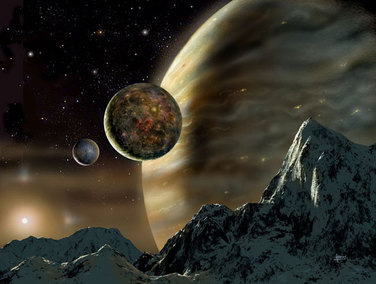Most of the exoplanets discovered so far have masses equal to or greater than Jupiter—the largest planet in our solar system. Some of these other solar systems have been found to contain two or more planets.
Exoplanets have held several surprises for astronomers who study our own solar system. Many of the gas giant planets discovered orbit very close to their stars—many even closer than Mercury orbits the sun! This was contrary to existing models, which held that gas giants could never form that close to a star—only smaller rocky worlds were thought to survive there.
The orbits of some of these new worlds are greatly elongated, far from the nearly circular orbits of the gas giants of our solar system. Discoveries such as these have changed the way we think solar systems form.
